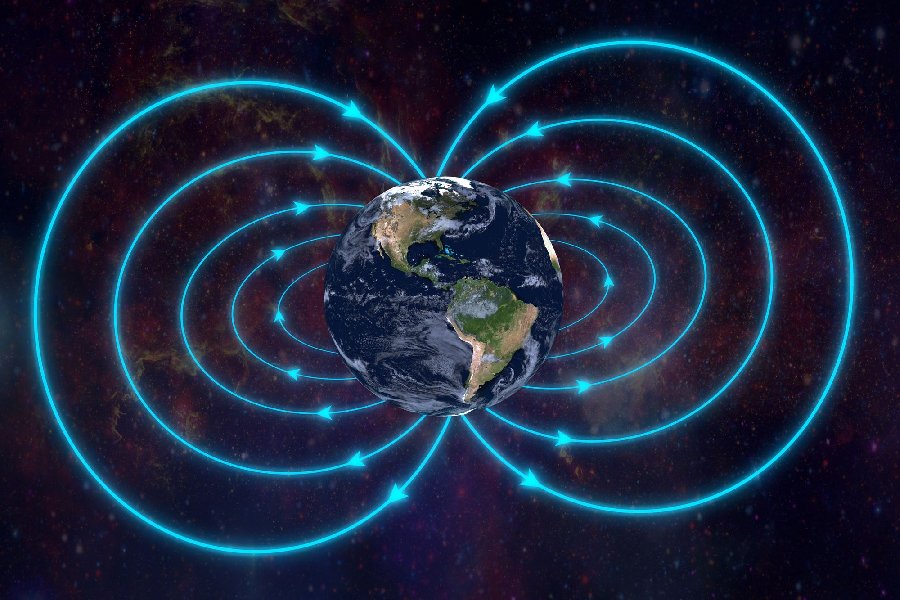Have you ever wondered what keeps our planet constantly turning? The Earth spins around perpetually without slowing or needing recharging. This daily rotation gives us reliable patterns like sunrises and sunsets, allowing life to thrive across shifting light and darkness. But what set this vital motion in place to start with?
Modern astronomy gives clues into the origins of Earth’s spin by looking back billions of years. Leading theories aim to explain how clouds of cosmic matter fused into the churning, rotating globe we inhabit today.
Looking at Earth’s formation and developmental history points more specifically to the events behind why does Earth spin. In this article, we will explore fascinating models proposing what forces initially spun the Proto-Earth into being and why this millennial rotation persists smoothly against all odds.
What key physics principles maintain the reliable rotation rate over eons? Discover how our planet continues spinning smoothly despite wobbles and periodic changes in speed. Along the way, grasp the basics of angular momentum and gravity crucial for exoplanetary discoveries in worlds beyond our own.

Why Does Earth Spin?
Why does Earth spin? Earth spins because, during its formation 4.5 billion years ago, it began as a rotating mass of gas and dust. As gravity pulled these materials together, the spinning motion intensified, giving rise to Earth.
The persistence of this rotation is due to the absence of significant resistance in the vacuum of space. Earth’s continuous spin brings about day and night cycles, shaping climate and influencing weather patterns crucial to the planet’s functioning.
Earth’s Daily Rotation on Its Axis
Concept of Earth’s daily spin
Earth rotates fully every 24 hours, taking one full day to spin around its axis. This 24-hour cycle of rotation is known as Earth’s rotational period, the time it takes to complete one full turn. Delving into why does Earth spin on its tilted axis reveals important planetary physics at play.
Earth spins around an imaginary pole called its rotational axis. This rotational axis remains tilted at about 23.5 degrees off-perpendicular to its orbital plane around the Sun. This consistent tilt as Earth orbits causes familiar seasonal changes by altering how direct sunlight strikes regions over a full year.
This reliable spin gives rhythm to Earth’s natural systems. The precise 24-hour rotating cycle helps set human constructs like the measurement of time. Biological cycles like sleep patterns also conform to Earth’s continual, unceasing spin.
Significance of Earth’s axial tilt
The tilt as Earth rotates introduces reliable phenomena fundamental for life, like repeating sunrises, sunsets, days, and nights within fixed hour ranges across latitudes over the seasons. This establishes circadian rhythms for Earth’s flora and fauna.
The difference in solar heating between the equator, tropics, and poles creates temperature variations between air masses around the globe. These temperature distinctions generate pressure gradients that drive wind and precipitation patterns.
So Earth’s spherical shape combined with its rotation exposes areas unevenly to solar radiation and this differential powers weather systems transporting heat and moisture between climate zones across latitudes.
What Causes the Earth to Spin?
Theories explaining Earth’s spin
The earliest version of our Solar System was a slowly spinning cloud of gas and dust. It is thought denser clumps began contracting under gravity, increasing their rate of spin. One clump formed into the spinning early Earth. Thus, the planet may have inherited initial rotations from the primordial nebula.
This law says a body conserving its original angular momentum must spin faster if contracting in size. The Earth was largely molten early on from impacts and radioactive decay. It would have compacted over time, increasing spin like a figure skater drawing arms inward during a pirouette.
Earth’s spin provides stability for life, seasons, days, and nights as we know it. Contemplating what happens if Earth stops spinning highlights the disastrous consequences if rotation ceased after billions of years of momentum. Such an abrupt halt seems only possible through cosmic calamity on massive scales.
Gravitational and solar influences
The gravity of large objects like the Sun and Moon may tug at planet shapes, very slightly transferring rotational motions. Earth was still hot when the giant impact forming our Moon occurred. The blast debris could have pulled Earth’s mass distribution enough to induce faster spinning.
Charged particles streaming outward from the young Sun may have imparted subtle rotational push on thinly layered planetary atmospheres. However, simulations find any spin from solar wind drag proves minor for Earth’s thick airs compared to the above tidal momentum and primordial spin root causes.

How Does the Earth Spin and Rotate?
Spinning and rotating mechanisms
Spins once daily on a tilted axis Earth spins once fully around its axis every 24 hours. This tilted axis stays pointed towards Polaris as our planet orbits the Sun each year.
The leading science theory explains Earth’s reliable spinning. It states that the conservation of angular momentum from formation has maintained it. This is an absence of alteration by external torques over billions of years.
From our viewpoint on Earth, it appears the Sun travels across our sky each day. But in reality, the planet is rotating to reposition itself relative to the Sun fixed in space, giving the impression of sunrise and sunset.
Axis, day and night, and Coriolis effect
Axis always points towards the North Star. Earth’s axis alignment stays inclined towards the pole star Polaris as it spins, enabling navigation systems. This tilt also regulates seasons annually as each hemisphere angles towards and away from direct overhead sunlight.
The west-to-east axis rotation carries places on the planet’s surface from light into shadow each spin, making the familiar pattern of day followed by night.
Additionally, the spin sets up an apparent deflection force called the Coriolis effect, causing winds and waters to bend right or left depending on the hemisphere. The Coriolis effect influences winds/waters.
How Fast Does the Earth Spin?
Earth’s rotation speed
The Earth rotates at slightly over 1000 miles per hour or 460 meters per second at the equator, completing a full 360-degree spin every 24 hours.
The speed gradually slows down closer to the North and South Poles relative to their tighter circumference circles spinning around the planetary axis. From vantage points in the Northern Hemisphere facing northward, Earth rotates in a leftward or counter-clockwise direction, completing one full turn each day and night cycle.
Variations in rotation speed
The length of Earth’s day does not stay precisely 24 hours but rather varies across decades and centuries between slightly shorter and longer true solar days. This periodic change in spin accounts for slight speed variations.
Compared to the orbits of the Moon around it each month, Earth spins over 27 times faster (taking just a single day vs the Moon’s 28 days). Relative to the outer planets, Earth’s spin compares even quicker.
Conclusion
Earth’s perpetual rotation traces back to the conservation of angular momentum established early in its molten history. Gradual cooling and tidal forces from the moon-birthing impact likely contributed additional spin too.
This momentum remains reliably stable thanks to an absence of external torques in space. Understanding the origins of Earth’s axis tilt illuminates the builders of seasonal rhythms and climate variations across the epochs. Comprehending the mechanisms governing planetary spin rates proves pivotal.
Understanding what causes and maintains spin applies to more than just Earth. It also aids in characterizing exoplanets being discovered across distant solar systems. We hope analyzing the fundamental astrophysics perpetuating Earth’s west-to-east spin has shed insightful light.
This explains why our world incessantly rotates on its slightly wobbly axis. This rotation creates the welcoming day and night cycle, enabling life throughout the ages. Learning more about why does Earth spin will further unravel the workings of worlds beyond our Solar System.
